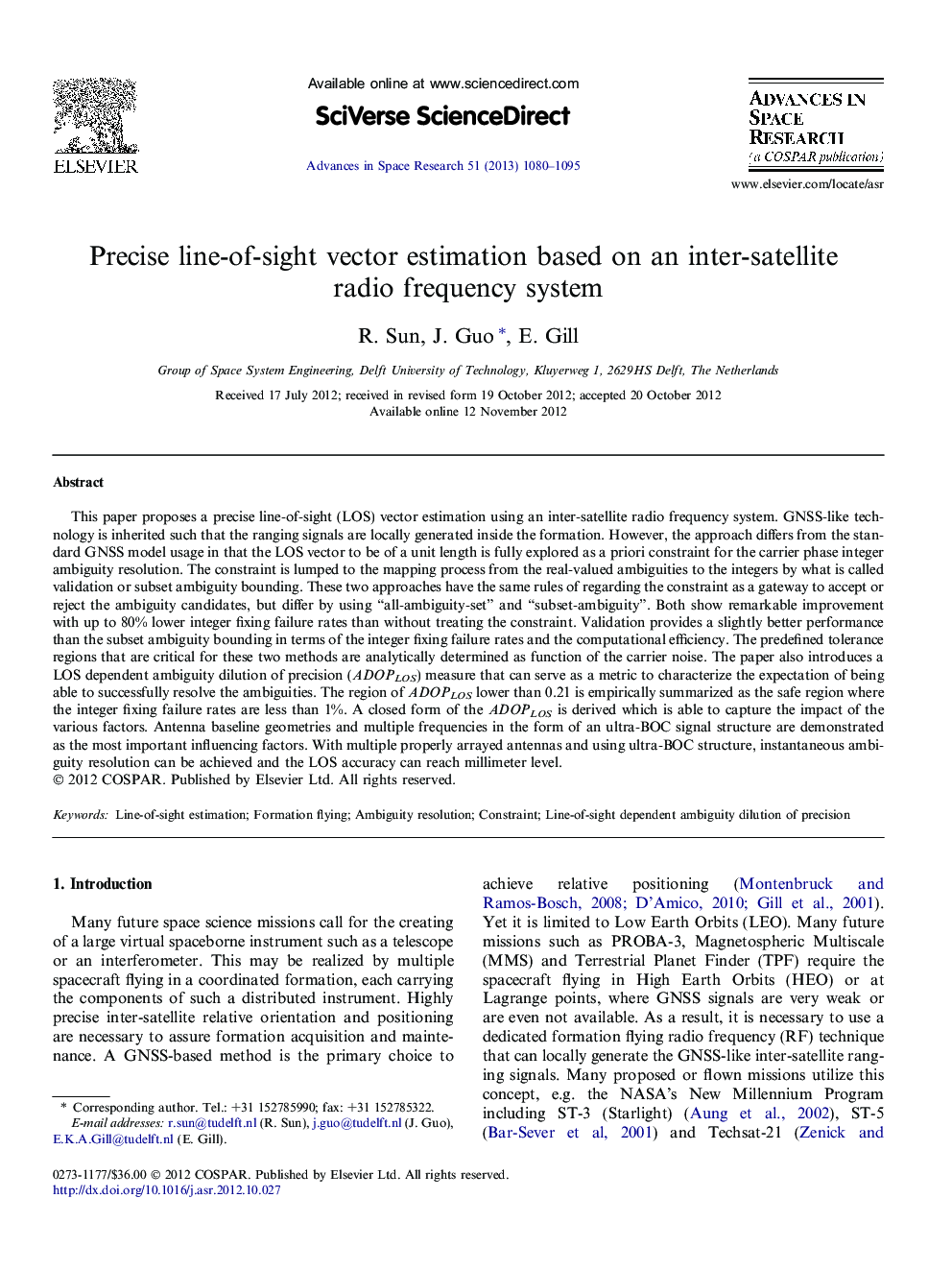| Article ID | Journal | Published Year | Pages | File Type |
|---|---|---|---|---|
| 1765573 | Advances in Space Research | 2013 | 16 Pages |
This paper proposes a precise line-of-sight (LOS) vector estimation using an inter-satellite radio frequency system. GNSS-like technology is inherited such that the ranging signals are locally generated inside the formation. However, the approach differs from the standard GNSS model usage in that the LOS vector to be of a unit length is fully explored as a priori constraint for the carrier phase integer ambiguity resolution. The constraint is lumped to the mapping process from the real-valued ambiguities to the integers by what is called validation or subset ambiguity bounding. These two approaches have the same rules of regarding the constraint as a gateway to accept or reject the ambiguity candidates, but differ by using “all-ambiguity-set” and “subset-ambiguity”. Both show remarkable improvement with up to 80% lower integer fixing failure rates than without treating the constraint. Validation provides a slightly better performance than the subset ambiguity bounding in terms of the integer fixing failure rates and the computational efficiency. The predefined tolerance regions that are critical for these two methods are analytically determined as function of the carrier noise. The paper also introduces a LOS dependent ambiguity dilution of precision (ADOPLOS) measure that can serve as a metric to characterize the expectation of being able to successfully resolve the ambiguities. The region of ADOPLOS lower than 0.21 is empirically summarized as the safe region where the integer fixing failure rates are less than 1%. A closed form of the ADOPLOS is derived which is able to capture the impact of the various factors. Antenna baseline geometries and multiple frequencies in the form of an ultra-BOC signal structure are demonstrated as the most important influencing factors. With multiple properly arrayed antennas and using ultra-BOC structure, instantaneous ambiguity resolution can be achieved and the LOS accuracy can reach millimeter level.
► Line-of-sight vector is precisely estimated using the RF carrier phase techniques. ► Integer ambiguity resolution is performed with constraints. ► Remarkable improvements are obtained after treating the constraint. ► A LOS dependent ambiguity dilution of precision measure is derived in closed-form. ► Antenna baseline geometries and frequencies are important factors for ambiguity resolution.
